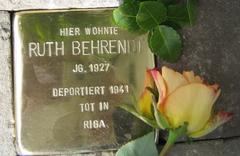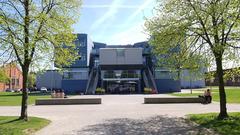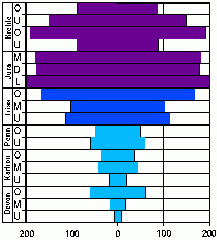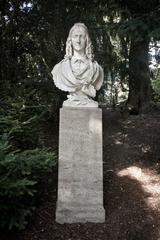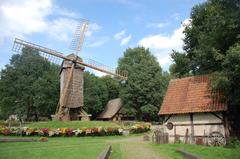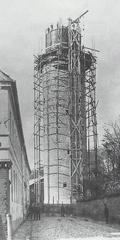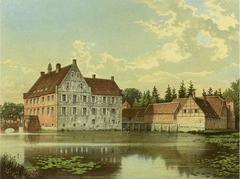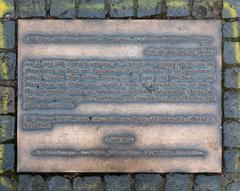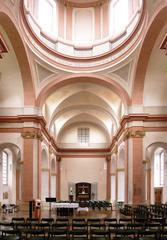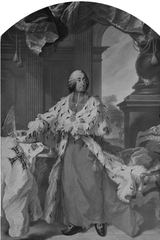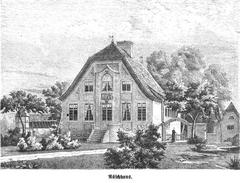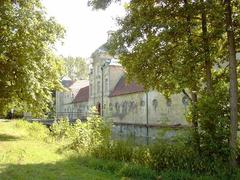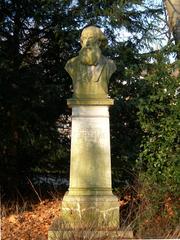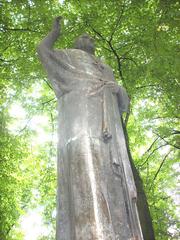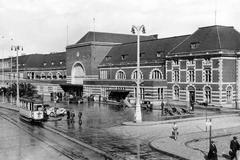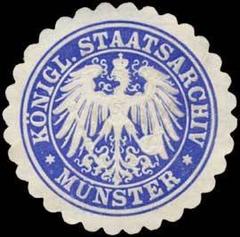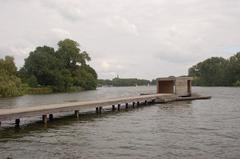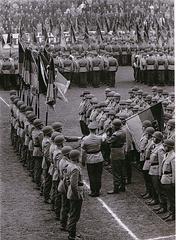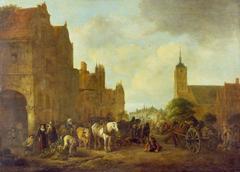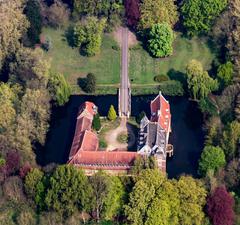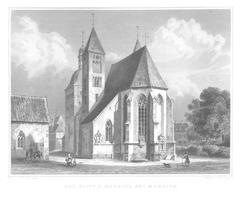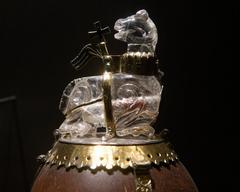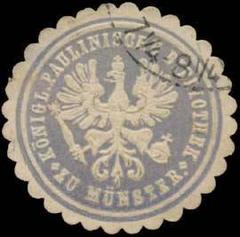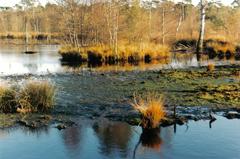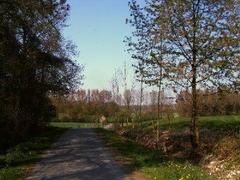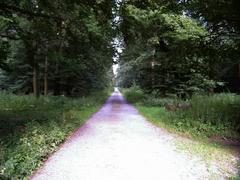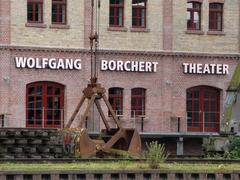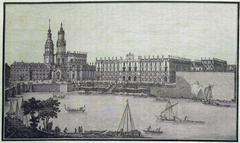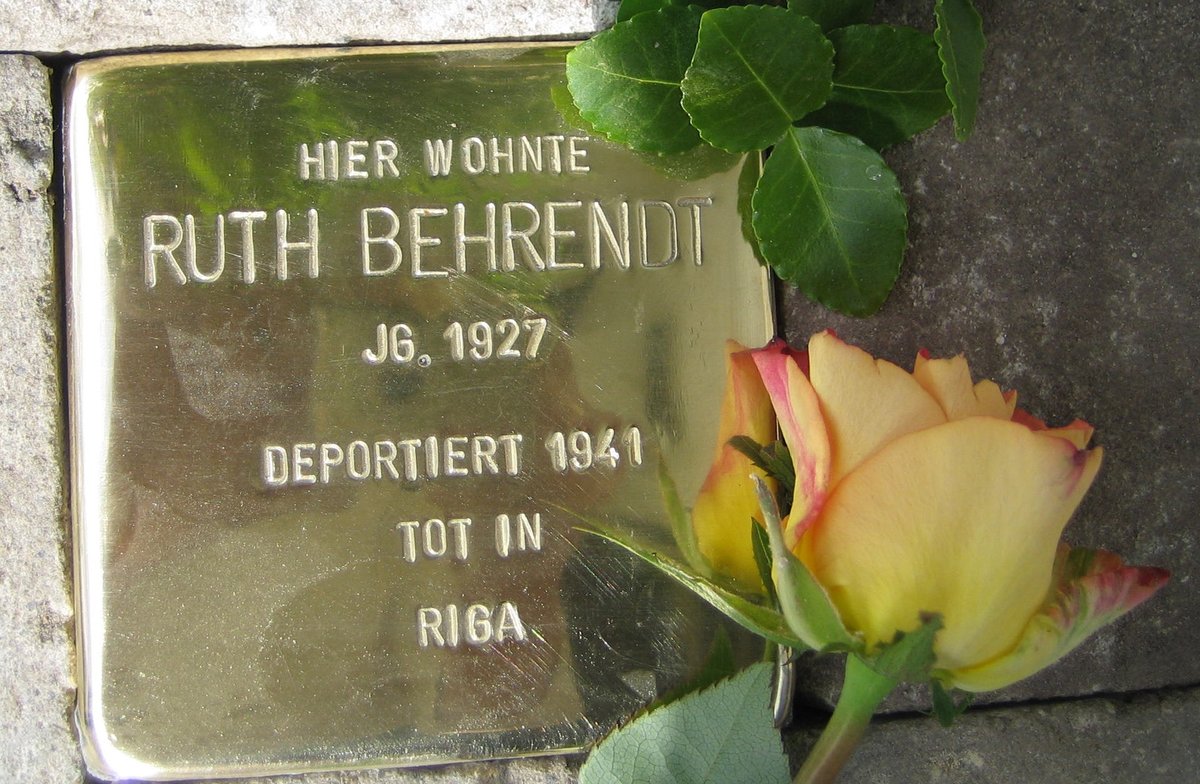
Stolperstein Ruth Behrendt Münster: Visiting Hours, Tickets, and Historical Significance
Date: 14/06/2025
Introduction
The Stolperstein (“stumbling stone”) dedicated to Ruth Behrendt in Münster stands as a powerful testament to the city’s Jewish heritage and a moving reminder of the fate of those persecuted under National Socialism. Conceived by the artist Gunter Demnig, the Stolpersteine project is the world’s largest decentralized memorial initiative, honoring victims of the Holocaust and Nazi oppression directly in the urban landscape. This guide offers visitors a comprehensive overview: historical context, practical information for visiting, the story behind Ruth Behrendt’s Stolperstein, and the ongoing cultural and educational significance of this unique memorial project (Stadt Münster; Münster Tube).
What Are Stolpersteine? Origins and Purpose
The Stolpersteine project was initiated in 1992 by Gunter Demnig. Each Stolperstein is a brass-plated concrete cube, 10 x 10 cm, embedded in the sidewalk before the last freely chosen residence of a victim of Nazi persecution. Each bears a simple inscription: the person’s name, date of birth, date of deportation, and — if known — date and place of death. The stones serve as individual, tangible reminders, inviting passersby to “stumble” upon the memory of those who once lived there (Stadt Münster).
Demnig’s central philosophy is encapsulated in the phrase: “Ein Mensch ist erst vergessen, wenn sein Name vergessen ist” (“A person is only forgotten when their name is forgotten”). The project thus restores names and stories to the otherwise anonymous tragedy of the Holocaust, weaving remembrance into the fabric of everyday life (Münster Tube).
The Stolpersteine Project in Münster: Scope and Community Impact
Since its introduction to Münster in 2004 by the association “Spuren Finden e.V.”, the Stolpersteine project has installed over 295 stones throughout the city. These memorials honor Jewish citizens like Ruth Behrendt, as well as Sinti and Roma, political dissidents, Jehovah’s Witnesses, homosexuals, and victims of forced sterilization and euthanasia (Rhein Main Verlag). The project is a community-driven effort, with local historians, students, and descendants of victims participating in research and funding (Spuren Finden). Each installation transforms a public space into a point of reflection, making memory visible and present.
Ruth Behrendt: Biographical Background
Ruth Behrendt was born in 1927 in Münster. Her family, like many Jewish residents, was deeply involved in the city’s cultural and commercial life before the Nazi rise to power. The community, though small, was vibrant and contributed significantly to Münster’s character (Germany.info). After 1933, escalating anti-Semitic laws and violence led to mass persecution, deportation, and annihilation.
Ruth, along with her family, was deported in December 1941 to the Riga Ghetto and later murdered in Auschwitz in November 1943 (Spuren im Vest). The Stolperstein in her honor anchors her story in Münster’s urban landscape, transforming the abstract scale of Holocaust statistics into a personal encounter.
Visiting the Stolperstein for Ruth Behrendt: Location and Practical Information
Exact Location
- Address: Emdener Straße 19, 48155 Münster, Germany (TracesOfWar)
- GPS Coordinates: 51.954495, 7.64311 (Mapcarta)
- The stone is set in the sidewalk in front of the building’s entrance in the Erphoviertel district, east of Münster’s city center.
Physical Description
The Stolperstein for Ruth Behrendt is a brass plaque measuring 10 x 10 centimeters, engraved with:
Hier wohnte Ruth Behrendt
Geb. 1927
Deportiert 1941
Ermordet in Auschwitz 1943
It is part of a group of Stolpersteine at this address, commemorating multiple members of the Behrendt and Sax families (TracesOfWar). The stones are arranged in a line, each inscribed with the name and fate of a family member.
Accessibility and Etiquette
- Open Access: Stolpersteine are accessible 24/7, with no ticket or fee required.
- Accessibility: The sidewalk at Emdener Straße 19 is level and suitable for wheelchairs and strollers.
- Etiquette: As memorials, visitors are expected to be quiet and respectful. Placing small stones or flowers on the Stolperstein is a traditional gesture of remembrance. Photography is permitted, but visitors should avoid obstructing the sidewalk or disturbing local residents.
How to Get There
- By Foot/Bike: About 1.5 km east of Prinzipalmarkt, Münster’s central square.
- By Public Transport: Easily accessible via city bus lines; nearby stops are within short walking distance.
Tours, Events, and Digital Resources
Guided Tours and Educational Programs
- Villa ten Hompel: Offers guided “Ins Stolpern Kommen” walks, visiting Ruth Behrendt’s Stolperstein and others, with historical background and personal stories (Villa ten Hompel).
- Booking: Via Villa ten Hompel or Münster’s Tourist Information.
- Duration: 1.5 to 2 hours. Fees may apply for guided groups.
- School Visits: “Spuren Finden e.V.” organizes educational walks and classroom materials (Spuren Finden).
Self-Guided Exploration
- Stolpersteine App: Free app with biographies, photos, and map navigation for Münster’s Stolpersteine (Spuren Finden).
- Digital Geoportal: Online map and routes for self-guided tours (Münster Tube).
Special Events
- Holocaust Remembrance Day (27 January): Ceremonies at Stolperstein sites.
- Installation Events: Publicly announced, with participation from families, students, and community members (Stolpersteine.eu).
Nearby Historical Sites and Attractions
- Villa ten Hompel: Memorial and research center on Nazi history (Villa ten Hompel).
- Historisches Rathaus: Münster’s historic town hall.
- Other Stolpersteine: Several stones in the area commemorate additional members of the Behrendt and Sax families (Mapcarta).
- Jewish Museum Westphalia: For a broader context of Jewish life in the region.
Frequently Asked Questions (FAQ)
Q: Are there tickets or opening hours for Ruth Behrendt’s Stolperstein?
A: No. The Stolperstein is accessible at all times, with no need for tickets.
Q: Is the site wheelchair accessible?
A: Yes, the sidewalk is accessible for wheelchairs and strollers.
Q: How can I find more Stolpersteine in Münster?
A: Use the Stolpersteine app, digital geoportal, or maps from the city’s tourist office and Villa ten Hompel.
Q: Can I participate in installation ceremonies or maintenance?
A: Yes, public participation is welcome for both events and regular cleaning. Contact “Spuren Finden e.V.” for details.
Cultural and Educational Significance
The Stolperstein dedicated to Ruth Behrendt, and others like it, serve not only as memorials but also as educational tools. Through guided tours, school projects, and digital resources, the project fosters historical literacy, empathy, and civic engagement. The physical placement of stones in everyday spaces anchors memory in daily life, ensuring that the victims of Nazi persecution remain present in the public consciousness (Stolpersteine.eu).
Ongoing community involvement, with research and sponsorship by local residents, strengthens Münster’s culture of remembrance. The project’s decentralized approach allows each memorial to serve as a point of reflection and dialogue, making history tangible and relevant.
Plan Your Visit
- Download the Stolpersteine Münster app for interactive maps and biographies.
- Book a guided tour through Villa ten Hompel or explore independently.
- Visit nearby historical sites to deepen your understanding of Münster’s past.
- Follow local organizations such as “Spuren Finden e.V.” and Villa ten Hompel on social media for updates.
Source Links and Further Reading
- Stolpersteine in Münster: A Visitor’s Guide to History, Memory, and Reflection, 2025, Stadt Münster (Stadt Münster)
- Visiting Stolpersteine in Münster: Remembering Ruth Behrendt and Jewish History, 2025, Germany.info (Germany.info)
- Visiting the Stolperstein for Ruth Behrendt in Münster: Location, History & Visitor Guide, 2025, TracesOfWar (TracesOfWar)
- Cultural and Educational Significance of the Stolperstein Dedicated to Ruth Behrendt in Münster: Visitor Information, Guided Tours, and Historical Context, 2025, Münster Tube (Münster Tube)
- Villa ten Hompel – Memorial and Educational Center, 2025 (Villa ten Hompel)
- Stolpersteine.eu – Official Stolpersteine Project Website, 2025 (Stolpersteine.eu)
- Wikipedia – List of Stolpersteine in Münster, 2025 (Wikipedia)
- Spuren Finden e.V. – Local Memorial Association Münster, 2025 (Spuren Finden)
By engaging with the Stolperstein for Ruth Behrendt at Emdener Straße 19, you help ensure that the memory of Münster’s Jewish community and all victims of National Socialism remains alive for future generations.
